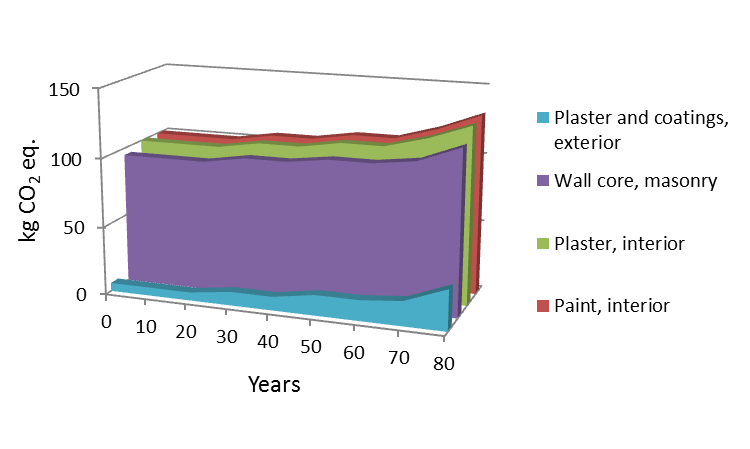Week 12 - Materials
3. LCA
3.3. Goals & scope
This provides the aim and the subject of an LCA study and in addition, a ‘functional unit’ is defined.
An example of a functional unit is ‘watching 100 h of television’ with, for instance, the aim to compare the environmental impacts of different types of television sets. In the inventory analysis, all extractions of resources and emissions of substances attributable to the studied functional unit are listed (Huijbregts et al. 2000).
Within the building industry, a suitable functional unit may be 1m2, applied over the full area on any substrate. It is only with the definition of a functional unit and a comparison of similar duty over a similar timescale that comparable analyses of life cycle costs and life cycle assessments be worthwhile (Konig et al.2010). The image below shows a comparison of external wall coatings over a period of 80 years in terms of a global warming potential indicator, figure reproduced from Konig et al. 2010.

An example goal or scope may state: "To compare the impacts from extraction to end of life of installing fibreglass insulation made from recycled bottles compared with wool based insulation treated with boron"
The LCA study focus may be:
- Well to wheel
- Cradle to grave
- Cradle to gate
- Cradle to cradle
How would you define each of these scopes ? Which option do you think is most appropriate for sustainable solutions ? Cradle to cradle design is a well-documented idea from Mcdonough and Braungart. They have produced two books on this subject "cradle to cradle" and "the Upcycle" which are well worth reading. In addition, they have a web-site which has a focus on the building industry - follow link.